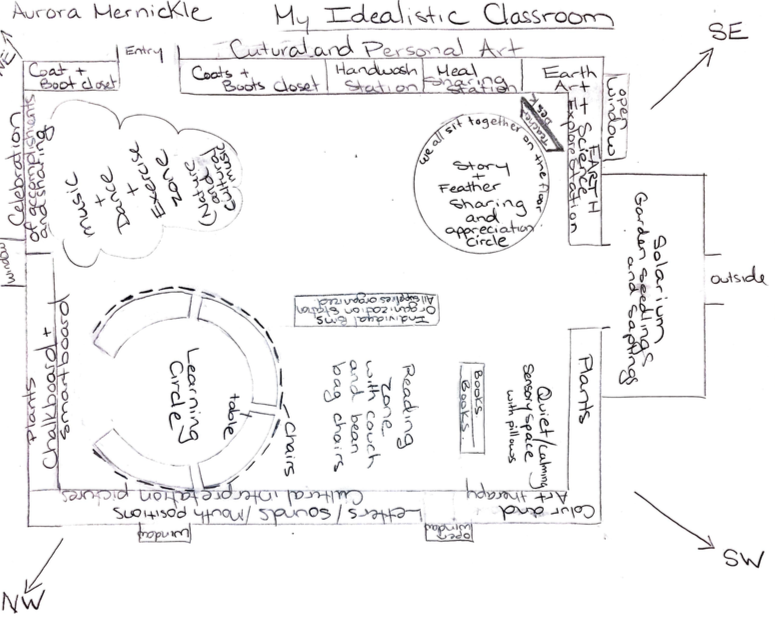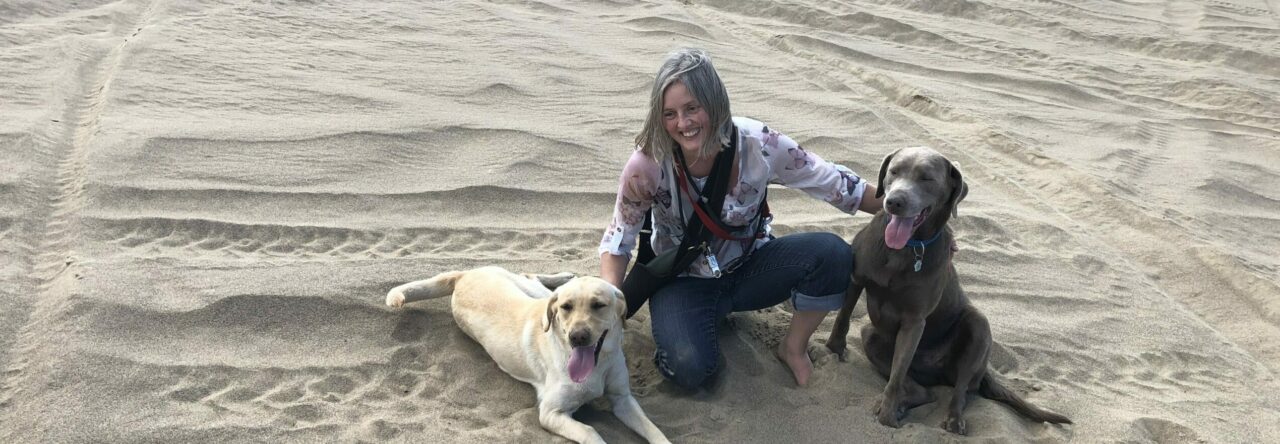Hope for the Future

https://www.boredpanda.com/hope-photography-contest-agora-images/?utm_source=google&utm_medium=organic&utm_campaign=organic
November 20, 2021
To see the realization of a vision we must first recognize the challenges of the past and future as stepping stones; opportunities to learn and grow from and to use the knowledge to power forward. Recognizing that we do not have the answers at the beginning but we will know them well along the way, as long as we are willing to learn.
Just my thoughts
In my vision for the future of education, I see the collaboration of ideas from generations of knowledge and the incorporation of new and innovative inspirations. If we acknowledge that we will not know all of the answers and that some of the answers are only revealed when connected through many experiences and ways of knowing, we will understand that we can only, truly, do our best if we are willing to learn. Education has come a long way; first derived from theories of what was important in the “societal standards,” for example, residential schools, where the purpose of education was to remove the individual culture and ways of knowing and being of the First Peoples, to the more recent acknowledgment that the student is their own unique entity and is the medium that makes the education valuable. Each student brings their own meaning to the education, as opposed to, the education bringing meaning to the student. With this in mind, my vision for education in the future will incorporate all of those pieces of each individual that make the learning experience holistic for every student, and every teacher. The well-being and connection of the student and the teacher depend on a network of support, collaboration, historical knowledge, creative freedom, understanding and welcoming of uniqueness, and recognition of healthy balance to bring the best learning experience possible.
In understanding where the foundations of education have come from, I derive that the early focus was to “create” individuals that could add to our society in “valuable ways” and conform to the ideals of governing bodies, for example, early education often focused on the necessity of men to attend school as they were needed to go to work and earn wages based on these learned skills. Women were thought to “only” be needed for housework and raising children, so, they did not need education. Further, education was more focused on religious priorities to form a society of individuals conforming to the belief systems encompassed by the people of the general locations. From this stemmed residential schools and segregated schools, where language, culture, and individual differences had no place. The schools taught conformity and obedience, in an attempt to completely remove all differences from society (Robson, 2013).
There have been many philosophies driving the ways of education, starting in the late 1700s, that give an opportunity for reflection on where we should go from here. Some were focused on simply training the individual to fit into a society based on building habits that were considered suitable. Other philosophies acknowledged that the point of education is to connect the student with the material and with the teacher in a way that is relevant to both, enabling grander ideas to arise (Hoose, n.d.). I tend to prefer the latter of these two ideals, as I believe that it is in the connection of the information to the individual teaching and learning that new higher-order thinking arises, where futuristic advancements will happen for the betterment of society. We do not live in a static world that can flourish with old, static information.
Students should become self-directed, lifelong learners, especially as they are preparing for jobs that do not yet exist, to use technologies that have not yet been invented, and solve problems that are not yet even recognized as problems (OECD, 2010, p.8).
I envision that all future education be centered around the individual learner and that the information to be learned to be presented by a teacher with a purposeful and intrinsic desire to share the information being taught. Suppose a student finds purpose and personal meaning in the subject material then the intrinsic value of the information increases and becomes connected to the learner in a way that lends to future life integration. It becomes a scenario of “I want to learn” as opposed to “I have to learn.” Students can choose the material of interest to them and carry it forward to integrate all of the subjects in the learning portfolio. The concept is much the same for the teacher; if the subject or topic is well known and of interest to the teacher then the passion for the information shines through and enriches the experience for the students. “Good teaching comes from the identity and integrity of the teacher” (Palmer, 1997, Para. 10). To be a good teacher we must be in touch with our true selves and the “heart” of who we are and how we connect with the material that we teach (Palmer, 1997). The most successful learning experiences come from inspiration and inspiration comes from connection, both with the information available and the way in which the material is presented.
Further, it is integral that teachers feel supported and connected as important members of a grander purpose. Being an educator is a big job! There are so many pressures on teachers to “have it all covered,” from the lesson plans to the individual needs, to the emotional support of often more than twenty little people, for six or more hours per day, all while trying to maintain a healthy family and personal life. I have seen teachers burn out. I have seen amazing, passionate, and positive teachers lose heart. What is wrong with this picture and why is it continuing to
happen? Generally speaking, in any organization, the leadership needs to acknowledge the workers who are on the front line. The direction should come from the “bottom-up” and the
support from the “top down.” The voices of teachers need to be heard. I feel that classrooms should be a maximum of 10 students per teacher with extra support where individuals need it. Teachers should be given an extra hour within the class time every day for preparation, planning, and marking. This should not be done on personal time. Materials should be in constant supply and be continuously upgraded and collaborated on by a team that listens to the requests of the teachers. It is this extra support as well “innovative culture” where “educators feel safe to take risks, think critically and creatively, and implement new ideas with support” that will help to keep a “positive organization culture” for the educators and learners alike (Wejr, 2019, para, 12). See figure 1. for words that should be a common theme in all teaching/learning environments. A teacher that is burnt out can not be their best and the student’s education and future will suffer the consequences, not to mention the loss of another hard-working, and once inspired, and caring soul.
Figure 1

Staff Description of a Positive Culture
(Figure taken from Building a Positive Staff Culture (Wejr, 2019))
In considering the holistic view of the child, while also incorporating the support of the teacher, there is one very important piece that is often missing from the education puzzle. To have the best education outcome the family of the children must be engaged. Often, the children are dropped off and left to figure it out for themselves. While the school staff does their best to get to know the child and create a safe and supportive learning environment, it is imperative that the family be connected to the child’s education. Family is the first connection to the child in all aspects of their lives. For a child to see education as worthy of their time and energy this must start with the parents/caregivers mentoring this. Even if the parent themselves did not have the opportunity to attend or finish school they can share in the learning of the child and advocate for them. Schools must be welcoming of family input and families should be an integral part of the learning plan for their children so that they are supportive and understanding of the process. Everyone should be on the same page. Students often mirror what is being portrayed at home and are very affected by the relationships that are built around them with those to that they feel connected. As Bronfenbrenner’s Ecological Systems Theory suggests, the child is affected by not only their family and school (micro-system) but also the relationship between the two (mesosystem) (Bronfenbrenner, 2000).
In my vision, I would want the educational experience to incorporate the knowledge and understanding of each child communicated by their family. I would have parent, grandparent, sibling, etc. show and tell days and support circles where children bring in their person or people to share in their learning journey on a regular basis. Creating this connection would give the student’s learning environment meaning and context to the family and integrate a feeling of significance for all parties. Tapor et al (2010) conclude that “parent involvement in a child’s
early education is consistently found to be positively associated with a child’s academic performance” (p.183). This connection would give insight to the educators as to how to create the most beneficial and personal experience for each of the children and their families.
In addition to the infinite benefits that incorporation of the family would bring to the experience, this method would also be supportive of the First Peoples Principles of Learning in which “Learning ultimately supports the well-being of the self, the family, the community, the land, the spirits, and the ancestors” (FNESC, 2020). Bringing in family members in support of education and asking for their input, stories, and connection, in a respectful and appreciative way, would help to bridge the cultural gaps and the past traumas of old systems. It would create an environment of inclusion and community among the families. In many cultures, it is the family members who do the teaching. Common ground can be built where children are at the center of the learning and of the community, where safety and acceptance are the themes and the children lead the way with their families by their side.
Another area of improvement, that I believe would greatly increase the success of the learning environment, would be a school that understands and lives by the natural rhythms of a healthy body, mind, and spirit of all of the students and staff. Natural light plays a significant role in maintaining the natural circadian rhythms of the body. As described by Eneref Institute (n.d):
Our circadian rhythm operates on a 24-hour cycle that controls our physiology—not only sleep and wakefulness but many physical, mental, and behavioral functions as well: blood pressure, heart rate, alertness, body temperature, and reaction time. The circadian system ensures peak performance during physical activity and efficient energy harvesting
during the active phase of our day. Perhaps more importantly, circadian rhythm regulates
changes in our immune function, cell cycle, DNA damage response, and tumor suppression (p.2).
Schools that are designed without natural lighting in all classrooms and offices are doing a great disservice to the staff and students of the school. “School planners have an opportunity to design lighting that supports alertness, mood and cognitive functions” (Eneref, n.d. p. 5) In my visionary school I would want skylights, huge side windows, and sunrooms, and plants (planted and cared for by the children) all around to simulate the natural, outside environment and create the most balanced and wellness promoting learning space possible.
Further, when the weather permits, I would have outside learning environments where nature is a part of the learning medium and the peace-fullness that nature brings could resonate throughout the day. With smaller class sizes and more support, I would have many field trips to adventure out and re-create the connection with nature that our modern society is so deprived of. I would focus on opportunities for exercise and deep breathing to reset the busyness of the minds of the teachers and students. Nature is the best medium for an inclusive environment where all people can reconnect with who they are and where they come from. Green and Keltner (2017) conclude:
Humans have long intuited that being in nature is good for the mind and body. From indigenous adolescents completing rites of passage in the wild to modern East Asian cultures taking “forest baths,” many have looked to nature as a place for healing and personal growth (para. 1)
All people require self-care to be able to learn effectively. We cannot expect a learning environment to be successful if it does not put emphasis on the very basic nature of human health and wellness. With this at the forefront of my vision, connection with and in nature will be imperative in my visionary school.
An additional consideration for the wellness of students and staff would be an on-staff nutritionist who does the regular screening of children and staff for deficiencies, nutrient imbalances, and allergies. I know this may seem far fetched but what I have learned as an orthomolecular practitioner, through practice and research, is that there are an overwhelming amount of children who are being medicated for common misbehavior diagnosis, psychological imbalances, chemical imbalances, and other “disorders” that can be partial, if not completely managed by nutritional interventions. One example, as stated by Greenblatt and Delane (2017):
Widespread recognition of diet as a modifiable factor in the midst of numerous, un-modifiable risks, highlight nutritional interventions as first-line strategies for treating ADHD (p.8).
Another example, explained by Pacholok (2014), is how misdiagnosis can occur when nutrient deficiency is the underlying cause of the condition:
The signs and symptoms of pediatric B12 deficiency frequently mimic those of autism spectrum disorders. Both autistic and brain-injured B12- deficient children have obsessive-compulsive behaviors and difficulty with speech, language, writing, and comprehension. B12 deficiency can also cause aloofness and withdrawal. Sadly, very few children presenting with autistic symptoms receive adequate testing for B12 deficiency (para. 2).
I strongly feel that many of the common “misbehaviors” that we see in classrooms can be connected in some way to imbalances within the diet (some associated with genetic factors can even be corrected by nutrient alterations). If this assessment were a regular part of the well-being focus of the staff and students and done in a way that made it a normal and positive intervention (where there was no judgment or diagnosis only shared knowledge and support), there could be beneficial advances for many individuals of the school community to overcome some of the greatest challenges within the learning environment, in an inclusive, safe, supportive and long-term, healthy habit building way. In my experience, when nutritional guidance and assessment is offered as a free service for people to find answers and help themselves, it is often very appreciated. With families being an integral part of the school they would be encouraged to come and learn together how to support their own well-being and that of all of the members of their family. I believe that knowledge of prevention and moderation through diet and wellness focus can be of great support in minimizing the challenges associated with common disorders in children and adults, ultimately increasing the future success of the learning environment.
While considering my vision for future educational settings, I realize that the concept of not having all of the answers at the beginning is my overarching theme and that we have much to learn as individuals and as a society. I know that my ideals may be far-reaching but it is in these visions that change begins to come to fruition. In recognizing that there are flaws in our past and current systems and striving to find more answers and better solutions to the struggles of today, as well as being open to collaboration, sharing, creating, and accepting of visions, we can take the first steps to change for a better educational future and a future that we can all be proud of.
References
Bronfenbrenner, U. (2000). Ecological systems theory. Encyclopedia of Psychology, Vol. 3., 129– 133. https://doi.org/10.1037/10518-046
Eneref Institute. (n.d.). Classrooms optimized with natural daylight increase student performance. Retrieved November 7, 2021, from https://img.acuitybrands.com/public- assets/catalog/781398/eneref-report_classrooms-optimized-w-daylight-led.pdf? abl_version=06%2F24%2F2019+21:37:19&DOC_Type=White_Paper.
First peoples principles of learning. First Nations Education Steering Committee FNESC. (2020, September 14). Retrieved November 6, 2021, from http://www.fnesc.ca/first-peoples- principles-of-learning/.
Green, K., & Keltner, D. (2017, March 1). What happens when we reconnect with nature. Greater Good Magazine. Retrieved November 7, 2021, from https://greatergood.berkeley.edu/article/item/what_happens_when_we_reconnect
_with_nature.
Greenblatt, J. M., & Delane, D. D. (2017). Micronutrient deficiencies in ADHD: A global consensus. Journal of Orthomolecular Medicine, 32(6), 1–14. Retrieved November 7, 2021, from https://isom.ca/wp-content/uploads/2017/12/Micronutrient-Deficiencies-in- ADHD-A-Global-Research-Consensus-32.6.pdf.
Hoose, N. A.-V. (n.d.). Educational psychology: History of Educational Psychology. Lumen. Retrieved November 6, 2021, from https://courses.lumenlearning.com/edpsy/chapter/history-of-educational-psychology/.
OECD. (2010). The nature of learning: using research to inspire practice.
https://www.oecd.org/education/ceri/50300814.pdf
Pacholok, S. M. (2014, February 18). Pediatric vitamin B12 deficiency: When autism isn’t autism. Pharmacy Times. Retrieved November 8, 2021, from https://www.pharmacytimes.com/view/pediatric-vitamin-b12-deficiency-when-autism- isnt-autism.
Palmer, P. J. (1997). The heart of a teacher identity and integrity in teaching. Change: The Magazine of Higher Learning, 29(6), 14-21. https:// doi.org/10.1080/00091389709602343
Robson, K. (2013). 3. In Sociology of education in Canada (pp. 54–87). Pearson Canada.
Topor, D. R., Keane, S. P., Shelton, T. L., & Calkins, S. D. (2010). Parent involvement and student academic performance: A multiple mediational analysis. Journal of Prevention & Intervention in the Community, 38(3), 183–197. https://doi.org/10.1080/10852352.2010.486297
Wejr, C. (2019, November 27). Building a Positive Staff Culture. Education Canada Magazine. Retrieved November 6, 2021, from https://www.edcan.ca/articles/building-a-positive- staff-culture/.

